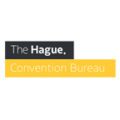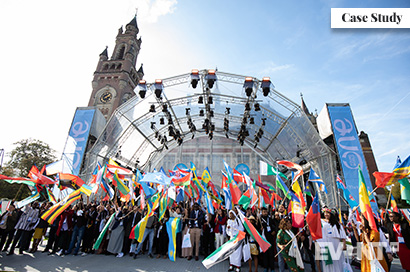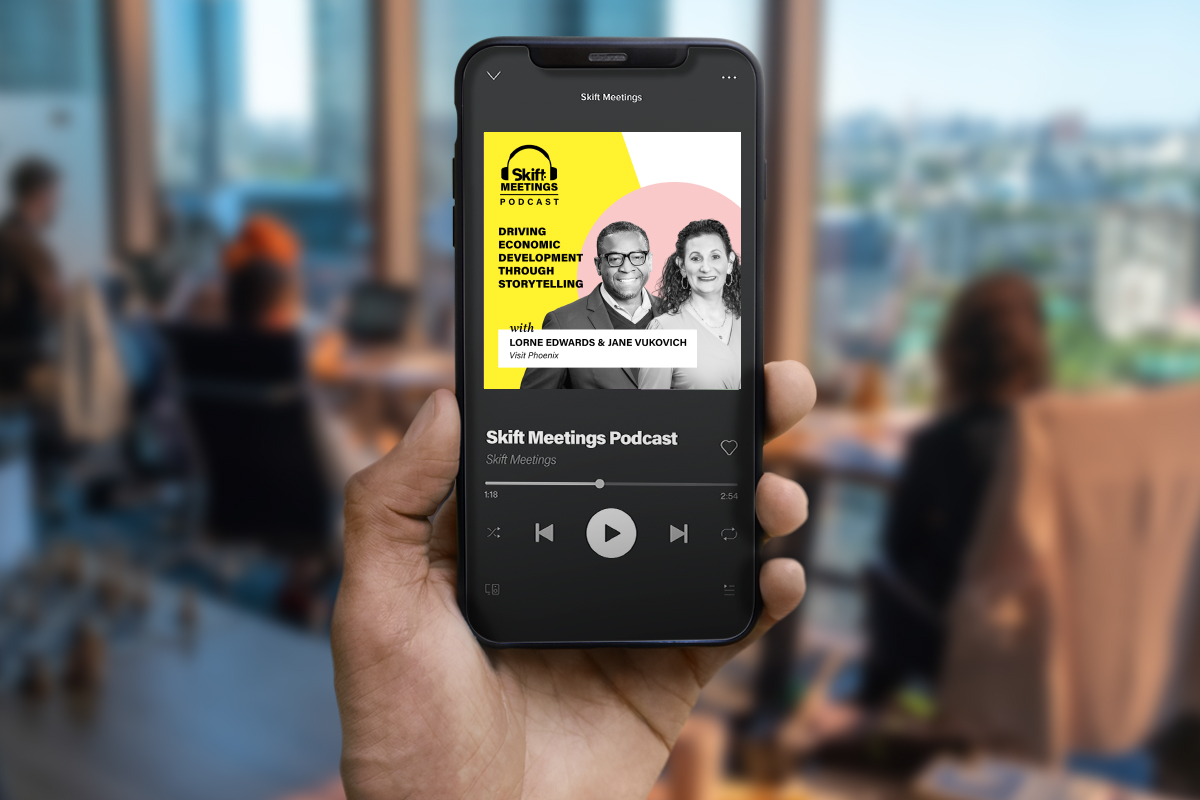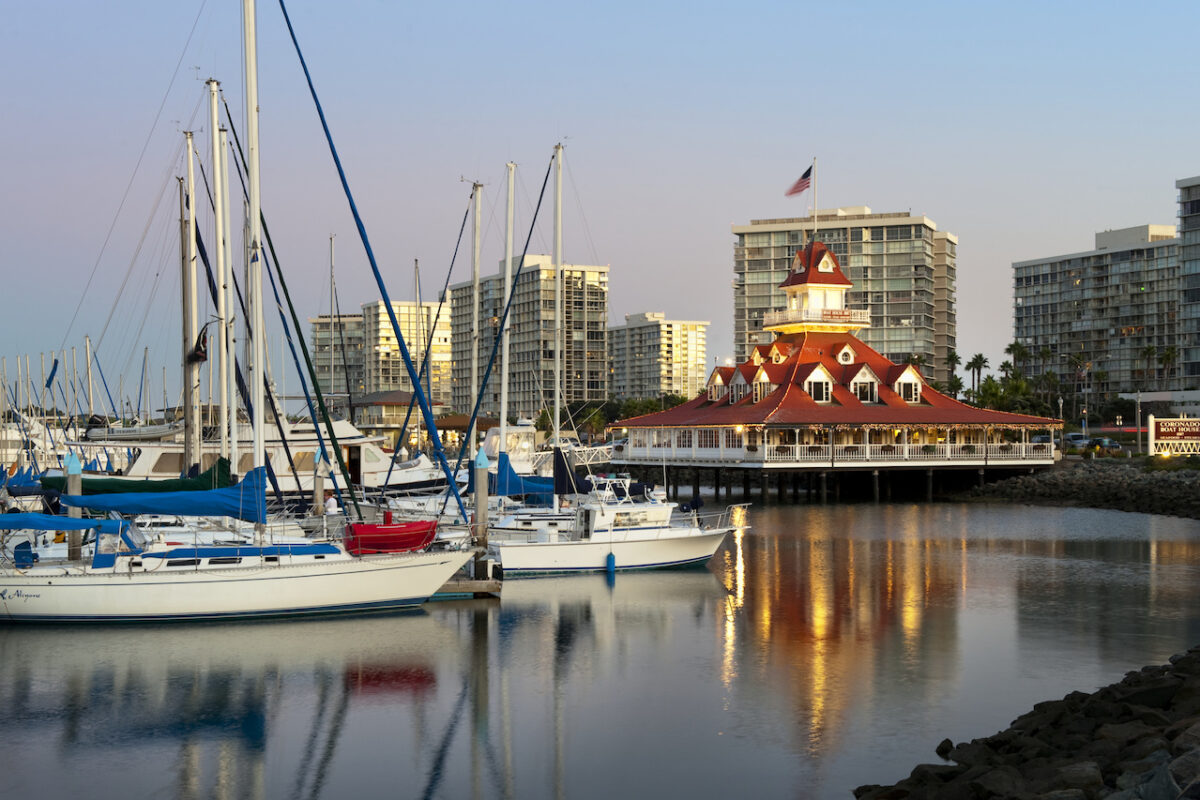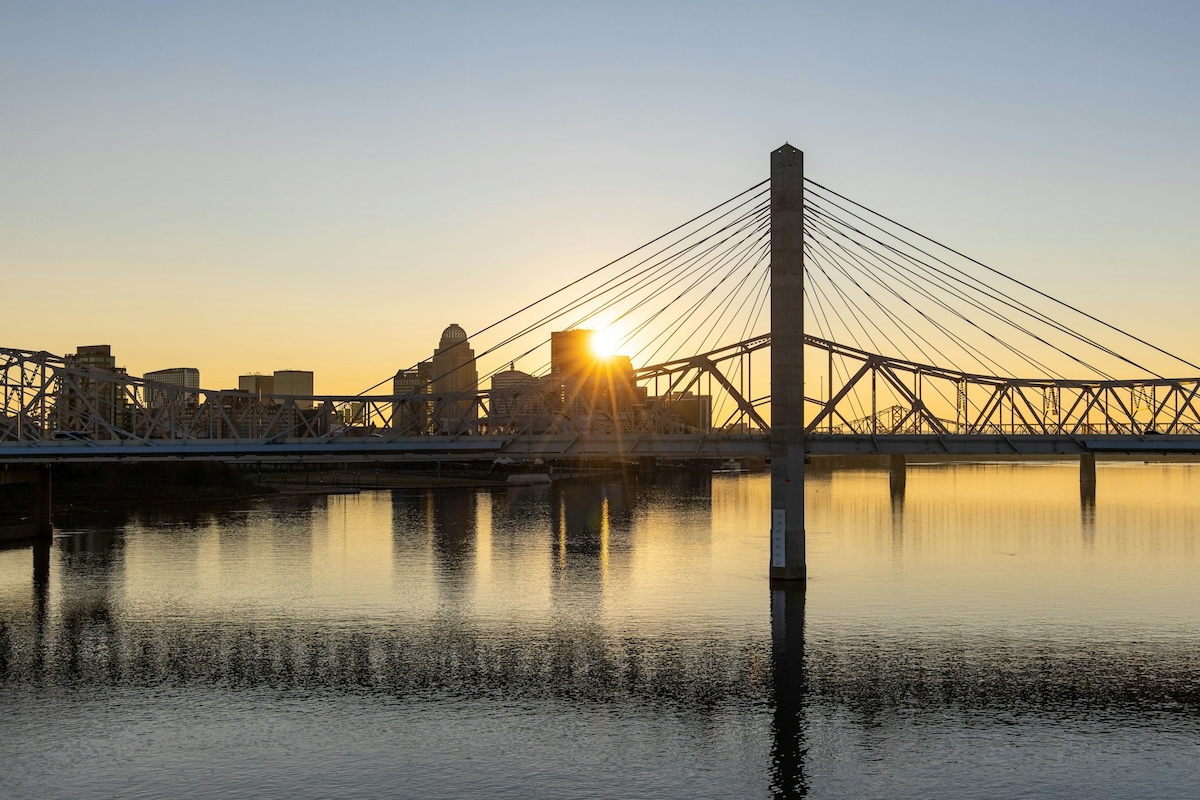Skift Take
HOW TO TELL THE HAGUE'S STORY AND BUILD EXCITEMENT AROUND THE DESTINATION
This is a case study sponsored by The Hague Convention Bureau. More information about Event Manager Blog’s case studies.
Finding a destination that suits your conference’s physical needs and supports your mission is essential. If you do, you’ll find that even a small city can help you beat previous attendance records.
The Hague, long known for its status as the International City of Peace and Justice, was an ideal fit for an event aimed at attracting young, global leaders focused on future solutions. The fit was so perfect for its intended crowd that One Young World Summit sold out and reached its largest attendance yet. Here is their story:
The Event
One Young World (OYW) Summit is the most important and impactful annual event for young talent and leaders. In 2017, OYW Bogota welcomed more than 1,300 participants from 194 countries. In 2018, with the selection of The Hague as its host city, the summit took place in front of a a sold-out crowd of more than 1,800 participants.
As part of the One Young World Summit, global leaders and celebrities dive into a direct dialogue with young talent focussing on creative positive change. Amal Clooney, Bob Geldof, Mary Robinson and Naomi Campbell have joined the event in previous years as Summit delegates.
Past host cities for One Young World Summits include cosmopolitan hotspots, such as London (2010), Zurich (2011), Pittsburgh (2012), Johannesburg (2013), Dublin (2014), Bangkok (2015), Ottawa (2016), and Bogotá (2017).
Since One Young World aims at making the world a better place, the planners were looking for a location that would lend a global feel and interest to their summit. One that would be aligned with making a better future for the world. All those components were found in The Hague.
Due to an unprecedented amount of interest, capacity for this year’s summit was reached early. With more than 1,800 delegates, the 9th annual summit was the largest gathering to date.
The Hague hosted its first UN meeting in 1899, meaning that the city has a history of making a positive global impact on the world. It was a natural fit for One Young World.
Quick Conference Facts
- The Hague (2018) hosted the largest summit to date, reaching its maximum of 1,800 participants
- The conference delegates are (mainly) aged 18-30 and come from global and national companies, NGOs, universities and other forward-thinking organizations
- The attendees are chosen for their impact in their home countries on a range of issues, including the role of business in society, transparency in business and government, the impact of climate change, global health, and hunger relief
- The Hague hosted the OYW over four days, from October 17-20th, 2018
- The 2018 summit was the first to offer a carbon offsetting program for attendees
The Event Objectives
The objectives of the One Young World Summit were to build a better world by:
- Connecting the brightest young leaders from around the world to help them find solutions for a variety of pressing matters, including hunger and sustainability
- Empowering attendees to make lasting connections to drive positive change
- Connecting current upcoming leaders, with the most valuable young talent from global and national companies, NGOs, universities and other organizations with world leaders who serve as One Young World Counsellors
- Setting a global stage to create a more inclusive future through debating, formulating and sharing innovative solutions for the pressing issues the world faces
- Channeling inspiration into beneficial projects for the global community
After each Summit, the delegates, who are then known as One Young World Ambassadors, work on their own initiatives or lend the power of the One Young World network to those initiatives already in existence. Of those attendees in employment, many return to their companies and work on creating change from within, energizing their corporate environment. One Young World Ambassadors from around the world are working on initiatives to address the UN’s 17 Sustainable Development Goals.
The Challenges
The Hague and the conference had two main challenges. While people had heard of The Hague, they may have known little about it. Planners worried this might affect attendance.
The second challenge was the physical demands on the site. It had to be large enough to suit the needs of 1,800 attendees but also intimate enough to encourage connections.
One Young World chose The Hague as its 2018 host city back in 2015 because of its profile and reputation as The International City of Peace and Justice. However, The Hague is a small city compared to the previous, well-known host cities (Bogota, Ottawa, Bangkok). One challenge to overcome was the communication of the city’s story and rich history and to ensure that people were willing to travel to the location.
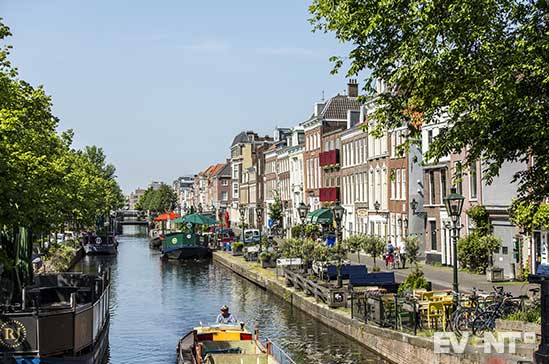

FOCUS ON NETWORKING AND INTERACTIVE LEARNING
The secondary challenge was the variety of session locations needed. Main stage sessions spanned wide-ranging subjects needed to be delivered in various formats, from delegate-led panels to keynote speeches. Plenary sessions were focused on the five topics decided upon by the One Young World Ambassador community. Each plenary session involved delegate speakers, selected through a highly competitive application process, showcasing the impact of their projects. During these sessions, young leaders shared innovative solutions to the world’s most pressing issues.
Why The Hague?
When your mission is critical and expresses so much of what your organization is about, it’s important to select a host city that reflects that mission.
Here’s what The Hague has to offer and why OYW selected it:
According to One Young World The Hague was chosen due to its impressive and passionate proposal as well as its long-time standing as the International City of Peace and Justice.
The Dutch Bid Committee had put together a tailored proposal through the work of eight young adults who are One Young World ambassadors and represent Siemens, Unilever, and McKinsey. They worked with the Dutch government and different international organizations to support promoting The Hague as host city. The Hague Convention Bureau (THCB) identified One Young World more than a year prior to the bid as being an ideal fit for The Hague’s offerings and reputation.
The city boasts:
ACCESSIBLE TRANSPORTATION
The Hague is easily accessible by two major airports, Amsterdam Schiphol Airport and Rotterdam-The Hague Airport. Both are connected to the city by train. Amsterdam Schiphol Airport is one of the largest hubs in Europe with 320 routes traveled every day. Rotterdam-The Hague Airport provides connections to 40 European cities including London and Rome.
The city can also be easily reached by train and a strong highway network.
A HISTORIC AND PRESTIGIOUS REPUTATION
The Hague has a deserving reputation of prestige, stature, and influence. It’s a place where important matters are discussed, where decisions are made and alliances forged. The city is home to the Dutch Royal Family, the Parliament, several Nobel-prize winning organizations, and numerous international companies. It is the second largest UN city.
At the same time, The Hague offers a diverse landscape and culture. Historic and modern architecture stand side-by-side in the charming city center. The cosmopolitan, international vibe complements the traditional Dutch way of living. It is also known for its focus on social and environmental sustainability.
ENTERTAINMENT
Young people, especially globally-oriented ones, enjoy a city rich in entertainment. The Hague offers sandy beaches (albeit a bit chilly in October), promenades, bars, restaurants, and a vibrant cultural scene to discover.
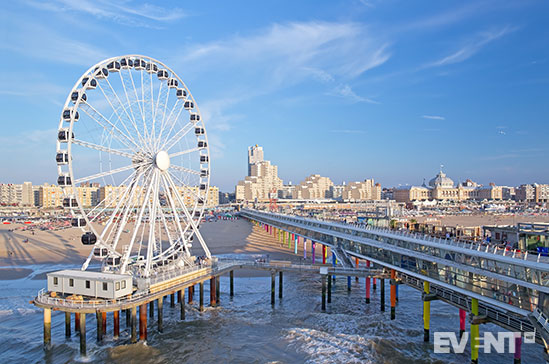

KNOWLEDGE INFRASTRUCTURE
Networking and learning were key to the One Young World Summit, so finding a host city that also stressed those connections was important. The Hague is home to many multinational companies such as Telecom and Royal Dutch Shell. Consequently, The Hague has attracted people with all kinds of talents, who contribute to the human capital and knowledge that the region holds.
Today, The Hague is a renowned knowledge hub for business areas and interests such as peace and justice, oil and gas, IT and telecommunication, energy and renewables and cybersecurity, as well as legal and finance.
The Hague Convention Bureau is uniquely positioned to assist event planners to connect with key people within these and other sectors for the benefit of the event; be that for speakers, delegates, sponsors, unique and personalized study tours, or more.
The Hague: The Destination at a Glance
- Hosted 149 events (corporate and association) in 2017, 135 in 2016
- The second UN city, after New York
- Home of 100 multinational companies
- 115 foreign embassies
- 11 kilometers of coastline
- 30 minutes from two major airports
- Rated one of the greenest cities in Europe
- Looking to become emission-free by 2040
- Many hotels hold the Green Key Certificate
- Blue Flag Certificate award winners
- More solar panels than any city in the Netherlands
- Expansion efforts will soon mean an additional 1,000 hotel rooms, a new theater, and culture center with shops, restaurants, and cafes due to be completed by 2021
The Results
The Hague Convention Bureau helped OYW tell the city’s story so that it became a much-noticed location, attracting the highest number of attendees to the summit yet. By working with the knowledge base of the community, they were able to leverage the vast offerings of the city and play up the fact that it fit the event’s message and mission perfectly.
The Hague Convention Bureau leveraged the city’s profile as a UN city and having a strong peace focus that aligned with the mission of OYW. It was a natural match, and one attendees could see clearly once it was elaborated on. For instance, playing up the unique opportunities at The Hague, such as hosting the Opening Ceremony in the garden of the Peace Palace, excited attendees. There were also several educational external break-out sessions hosted at international organizations of high acclaim including Europol and the Organization for the Prohibition of Chemical Weapons (OPCW). Marketing these opportunities ahead of time created solid interest and sold tickets.
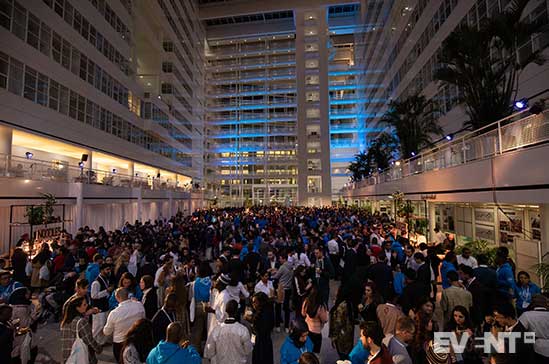

The second challenge involved finding the right space for a variety of uses. Summit networking and learning were critical, and the event required a design that would facilitate both. The Hague Convention Bureau worked with One Young World to use both large-scale conference rooms and locations around the city, thus each venue would fit exactly what the sessions needed.
The exhibition area and side stages came to life during breaks from the main stage sessions. Delegates would network, watch expert panels, and participate in intimate Q&A sessions with counselors. “How To” Workshops focused on interactive, practical skills and scenario-based sessions. These were run by ambassadors, counselors and delegate partners.
One classroom setup wasn’t enough to address their dynamic needs. The Summit needed much more. The Hague Convention Bureau enlisted community assistance and the following venues for a memorable bid.
How The Venues Helped the Event to Achieve the Objectives
Due to the event’s varied needs for meeting spots, a number of venues were used. Each fit the session needs in different ways. They included:
-
The Peace Palace
The opening ceremony was held in front of the Peace Palace, the symbol for peace and justice. The location reinforced the objective of OYW building a better world. For the opening ceremony, the Peace Palace was dressed in OYW blue and made for a poignant setting.
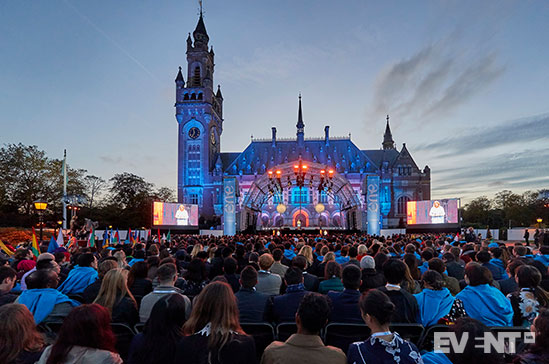

-
Museon The Hague
Two special editions of HagueTalks, an interactive discussion platform about peace and justice, took place at the Museon The Hague. The Hague University organized guest lectures by One Young World speakers and provided scholarships for its students. Museon The Hague recently opened its new permanent exhibition ONE PLANET. The Museon used the 17 Sustainable Development Goals from the United Nations as the starting point and is thus based on the same goals as OYW.
-
Community Dinners
were organized across the city: During the conference, twenty-one organizations hosted the more than 1,800 delegates at different locations in the city for a community dinner. The host organizations held talks during the dinner with the young professionals about their goals for a better world. These dinners took place at unusual locations, such as in community restaurants in different neighborhoods (Resto Van Harte), at The Hague University, in the Humanity Hub, Malieveld, in the ADO Den Haag stadium, and even in an Albert Heijn supermarket.
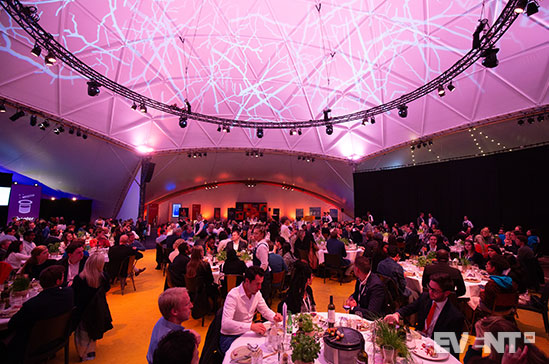

-
International Zone
Getting to know the city: The delegates also visited a number of international organizations in the International Zone. A special breakfast session with The Hague startups was held in the Binckhorst, and there was a food truck festival on the Pier. International journalists got the opportunity to become acquainted with the International City of Peace and Justice during a special tour of The Hague.
-
World Forum The Hague
The major venue of the summit facilitated the diverse OYW program through its flexibility of offerings and designs. World Forum The Hague encompasses the largest auditorium in the Netherlands with 2,161 seats, 35 breakout rooms, and 12.000 square meters of exhibition space.
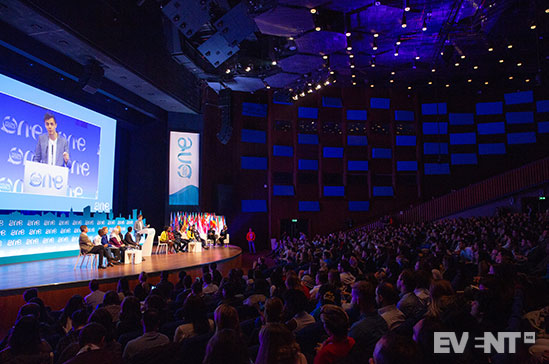

The entire community banded together in order to meet the needs of One Young World through unique venues and entertainment. They worked to create spaces that were intimate and inviting for networking and exchange but still offered the ease of access and transportation required.
The Hague Convention Bureau understood the unique needs of OYW and was able to showcase how the city fit those needs perfectly.
Takeaways For Event Planners
When selecting a host city:
Start with plenty of time and create a decent overall project plan. This will not only decrease stress but also reduce a lot of extra costs.
If possible, work with the same project manager/project team who worked on and secured the bid. In this way, relationships are continued and connections strengthened. This also ensures that all parties are familiar with what was promised and needed.
Have a good communication and PR strategy in place. ROI from a host city requires publicity and marketing. Make sure you have the right amount of communication capacity within your team to leverage this and tell the location’s story. The convention bureau should be able to help with that.
Choose a host city that aligns with your mission and event goals, making the city an extension of your event and one that reflects you well as a deliberate decision.
IN CONCLUSION
If you want a host city that truly makes an impression, choose one that is aligned with your event mission. Look for commonalities in what they elevate and promote. And speak to the convention bureau about how you can promote these things, as well as work with local community groups to advance your mission.
